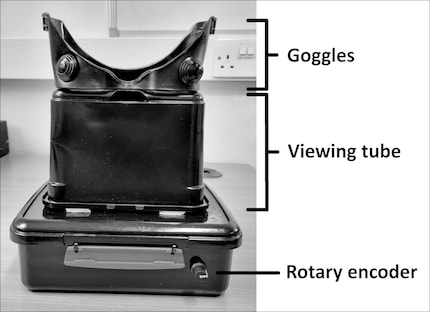
Study shows: Some people perceive the world at a higher "frame rate"
Some people perceive their surroundings with more images per second. This can have an impact on performance in fast sports and on the perception of games.
A new study from Trinity College in Dublin shows that some people perceive their surroundings at higher frequencies than others. Or, to put it another way: Some people have a higher "temporal resolution" and can therefore retrieve and process more information per second.
The results of the study suggest that people with a higher temporal resolution have an innate advantage in situations where fast reaction times are crucial. For example, in fast-paced sports or competitive gaming.
The scientific background to the study
Every living creature with vision has a different temporal resolution. Smaller animals in particular see at an extremely high resolution compared to humans. The more images per second a creature processes, the slower it perceives its surroundings. Hummingbirds, other small birds and insects see the world in a "The Matrix"-like bullet time. This allows them to fly around obstacles at top speed, catch fast-moving prey and avoid fly swatters.
Past studies have shown that the temporal resolution of humans is dependent on various physiological factors. For example, impaired brain function, diseases such as Alzheimer's or low blood oxygen levels can have a negative impact on temporal resolution. It was not possible to compare the study results due to different research questions and experimental set-ups. The Trinity College Dublin study set out to test individual differences in temporal resolution that are not attributable to specific physiological differences or diseases.
The results of the study were not comparable.
How it was tested
Eighty-eight students from Trinity College Dublin were invited to take part in the experiment. The test subjects were all healthy and of a similar age. Their temporal resolution was tested using the "Critical Flicker Fusion" threshold, or CFF for short. The CFF threshold is the point at which an individual no longer perceives a flickering light as flickering, but as a constant light source.
An apparatus reminiscent of VR devices was developed for the experiment. The test subjects looked through glasses with a darkened viewing tube at a white LED. The flickering frequency could be adjusted up or down in 1 hertz increments using a controller.

Source: Plos One / Trinity College Dublin
The experiment was conducted in two steps. Firstly, the test subjects were asked to turn a constantly lit light down with the Hertz control until they could perceive a flickering. In addition, the participants had to turn the control up on a flickering light until they recognised the LED as a constant light source.
To confirm the results, in a second step the participants were presented with a series of stimuli that were either above or below the previously measured individual CFF threshold. Both steps were repeated three times for 49 participants in order to account for intrapersonal variance in the test results.
Extremely large differences between the test subjects
The measured differences are very high, statistically significant and stable over time. Some test subjects reported that they perceived the LED as a constant light source, even though the lamp flashed 35 times per second. Other test subjects, on the other hand, were still able to perceive the flickering at a speed of over 60 times per second.
"We don't yet know how these differences in visual temporal resolution affect our daily lives," says study leader Clinton Haarlem in an interview. "However, we believe that the individual differences could become apparent in high-speed situations where you need to track fast-moving objects. Such as in ball sports, for example, or in competitive games with a high pace of play." The researchers want to find out what specific influence the temporal resolution has on performance in sports and gaming in follow-up studies.
My love of video games was unleashed at the tender age of five by the original Gameboy. Over the years, it's grown in leaps and bounds.
From the latest iPhone to the return of 80s fashion. The editorial team will help you make sense of it all.
Show all